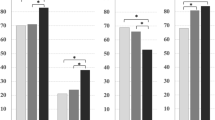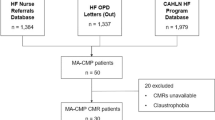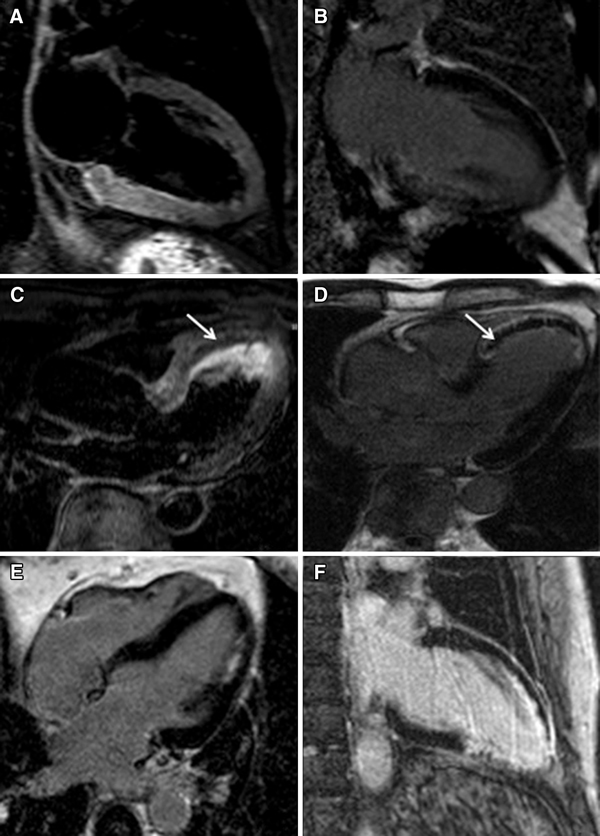Abstract
The use of cocaine constitutes a major health problem. Cocaine use is associated with acute and chronic complications that might involve any system, the most common being the cardiovascular system. The precise incidence of cocaine-induced cardiomyopathy remains mysterious and probably underreported. Cocaine use should be considered in young patients presenting with chest pain or heart failure without other underlying risk factors. Cocaine-related cardiovascular complications can be acute or chronic and include ischemic and non-ischemic events. Frequent cocaine users have a seven-fold higher risk of myocardial infarction. In addition to its ischemic effects, other cardiovascular complications of cocaine use and abuse are hypertensive crises, aortic dissection or aortic rupture, cerebral hemorrhage, arrhythmias and sudden cardiac death, myocarditis, dilated cardiomyopathy, heart failure, and endocarditis. The mechanism of cocaine’s cardiovascular toxicity relates to its sympathomimetic effect, to the block of voltage-dependent K+ and Na2+ channels, and a hypersensitivity reaction to drug or contaminants, such as amphetamine, sugars, or talc. Cardiac magnetic resonance (CMR) can provide a valuable assessment of cocaine-induced myocardial damage both in acute and chronic cardiac complications: it gives prognostic information in clinically relevant settings, and it identifies silent myocardial damage in asymptomatic patients. Indeed, CMR study should be considered in symptomatic cocaine users to assess the extent and evolution of myocardial injury. Furthermore, it was suggested to repeat CMR after 4–8 months of appropriate management to evaluate myocardial response to abstinence and medical therapy.





Similar content being viewed by others
Availability of data and material
Not applicable.
Code availability
Not applicable.
References
CRI ME, UNOODA, World drug report 2010
(EMCDDA), EMCfDaDA, The state of the drugs problem in Europe. ANNUAL EMCDDA REPORT 2009. 2009
L Wiessing, D Olszewski, D Klempová, J Vicente, P Griffiths, EMCDDA Annual report 2009: cocaine and heroin maintain firm hold on Europe’s drug scene. 2009
Maraj S, Figueredo VM, Morris DL (2010) Cocaine and the heart. Clin Cardiol 33:264–269
Egred M, Davis GK (2005) Cocaine and the heart. Postgrad Med J 81:568–571
Schwartz BG, Rezkalla S, Kloner RA (2010) Cardiovascular effects of cocaine. Circulation 122:2558–2525
Vroegop MP, Franssen EJ, van der Voort PH, van den Berg TN, Langeweg RJ, Kramers C (2009) The emergency care of cocaine intoxications. Neth J Med 67:122–126
Rothman RB, Baumann MH, Dersch CM, Romero DV, Rice KC, Carroll FI, Partilla JS (2001) Amphetamine-type central nervous system stimulants release norepinephrine more potently than they release dopamine and serotonin. Synapse 39:32–41
Lange RA, Hillis LD (2001) Cardiovascular complications of cocaine use. N Engl J Med 345:351–358
Cooper CJ, Said S, Haider A, Rodriguez E, Trien R, Ajmal S, Blandon PA, Hernandez GT (2013) Dilated cardiomyopathy secondary to chronic cocaine abuse: a case report. BMC Res Notes 6:536
Isner JM, Mark Estes NA, Thompson PD, Costanzo-Nordin MR, Subramanian R, Miller G, Katsas G, Sweeney K, Sturner WQ (1986) Acute cardiac events temporally related to cocaine abuse. N Engl J Med 315:1438–1443
Phillips K, Luk A, Soor GS, Abraham JR, Leong S, Butany J (2009) Cocaine cardiotoxicity: a review of the pathophysiology, pathology, and treatment options. Am J Cardiovasc Drugs 9:177–196
Chiueh CC, Kopin IJ (1978) Centrally mediated release by cocaine of endogenous epinephrine and norepinephrine from the sympathoadrenal medullary system of unanesthetized rats. J Pharmacol Exp Ther 205:148–154
Ghuran A, Nolan J (2000) Recreational drug misuse: issues for the cardiologist. Heart 83:627–633
McCord J, Jneid H, Hollander JE, de Lemos JA, Cercek B, Hsue P, Gibler WB, Ohman ME, Drew B, Philippides G, Newby LK (2008) Management of cocaine-associated chest pain and myocardial infarction: a scientific statement from the American Heart Association Acute Cardiac Care Committee of the Council on Clinical Cardiology. Circulation 117:1897–1907
Wilbert-Lampen U, Seliger C, Zilker T, Arendt RM (1998) Cocaine increases the endothelial release of immunoreactive endothelin and its concentrations in human plasma and urine: reversal by coincubation with sigma-receptor antagonists. Circulation 98(5):385–390
Havranek EP, Nademanee K, Grayburn PA, Eichhorn EJ (1996) Endothelium-dependent vasorelaxation is impaired in cocaine arteriopathy. J Am Coll Cardiol 28(5):1168–1174
Mittleman MA, Mintzer D, Maclure M, Tofler GH, Sherwood JB, Muller JE (1999) Triggering of myocardial infarction by cocaine. Circulation 99(21):2737–2741
Kugelmass AD, Oda A, Monahan K, Cabral C, Ware JA (1993) Activation of human platelets by cocaine. Circulation 88(3):876–883
Moliterno DJ, Lange RA, Gerard RD, Willard JE, Lackner C, Hillis LD (1994) Influence of intranasal cocaine on plasma constituents associated with endogenous thrombosis and thrombolysis. Am J Med 96(6):492–496
Steffel J, Iseli S, Arnet C, Lüscher TF, Tanner FC (2006) Cocaine unbalances endothelial tissue factor and tissue factor pathway inhibitor expression. J Mol Cell Cardiol 40(5):746–749
Liaudet L, Calderari B, Pacher P (2014) Pathophysiological mechanisms of catecholamine and cocaine-mediated cardiotoxicity. Heart Fail Rev 19(6):815–824
Kozor R, Grieve SM, Buchholz S, Kaye S, Darke S, Bhindi R, Figtree GA (2014) Regular cocaine use is associated with increased systolic blood pressure, aortic stiffness and left ventricular mass in young otherwise healthy individuals. PLoS One 9(4):e89710
Graziani M et al (2016) Cardiovascular and hepatic toxicity of cocaine: potential beneficial effects of modulators of oxidative stress. Oxidative Med Cell Longev 2016:8408479
Rump AF, Theisohn M, Klaus W (1995) The pathophysiology of cocaine cardiotoxicity. Forensic Sci Int 71(2):103–115
Henning RJ, Silva J, Reddy V, Kamat S, Morgan MB, Yong Xiang Li, Chiou S (2000) Cocaine increases beta-myosin heavy-chain protein expression in cardiac myocytes. J Cardiovasc Pharmacol Ther 5(4):313–322
Waspe LE, Ordahl CP, Simpson PC (1990) The cardiac beta-myosin heavy chain isogene is induced selectively in alpha 1-adrenergic receptor-stimulated hypertrophy of cultured rat heart myocytes. J Clin Invest 85:1206–1214
Henning RJ, Cuevas J (2006) Cocaine activates calcium/calmodulin kinase II and causes cardiomyocyte hypertrophy. J Cardiovasc Pharmacol 48:802–813
Lavender TW, McCarron B (2013) Acute infections in intravenous drug users. Clin Med (Lond) 13:511–513
Frontera JA, Gradon JD (2000) Right-side endocarditis in injection drug users: review of proposed mechanisms of pathogenesis. Clin Infect Dis 30:374–379
Wilson LD, Jeromin J, Garvey L, Dorbandt A (2001) Cocaine, ethanol, and cocaethylene cardiotoxity in an animal model of cocaine and ethanol abuse. Acad Emerg Med 8(3):211–222
Beek AM, van Rossum AC (2010) Use of cardiovascular magnetic resonance imaging in the assessment of left ventricular function, scar and viability in patients with ischaemic cardiomyopathy and chronic myocardial infarction. Heart 96:1494–1501
Symons R, Pontone G, Schwitter J, Francone M, Iglesias JF, Barison A, Zalewski J, de Luca L, Degrauwe S, Claus P, Guglielmo M, Nessler J, Carbone I, Ferro G, Durak M, Magistrelli P, Lo Presti A, Aquaro GD, Eeckhout E, Roguelov C, Andreini D, Vogt P, Guaricci AI, Mushtaq S, Lorenzoni V, Muller O, Desmet W, Agati L, Janssens S, Bogaert J, Masci PG (2018) Long-term incremental prognostic value of cardiovascular magnetic resonance after ST-segment elevation myocardial infarction: a study of the collaborative registry on CMR in STEMI. JACC Cardiovasc Imaging 11:813–825
Pennell DJ, Sechtem UP, Higgins CB, Manning WJ, Pohost GM, Rademakers FE, van Rossum A, Shaw LJ, Yucel EK, Society for Cardiovascular Magnetic Resonance, Working Group on Cardiovascular Magnetic Resonance of the European Society of Cardiology (2004) Clinical indications for cardiovascular magnetic resonance (CMR): consensus panel report. Eur Heart J 25(21):1940–1965
Smedema JP (2009) Cardiac magnetic resonance predicts reversibility of cocaine-induced ventricular dysfunction. Cardiovasc J Afr 20:198–199
Wiener RS, Lockhart JT, Schwartz RG (1986) Dilated cardiomyopathy and cocaine abuse. Report of two cases. Am J Med 84:699–701
Buchholz S et al (2010) Cardiovascular flashlight. Cocaine-induced myocardial injury seen as multiple mid-wall foci of late enhancement by contrast-enhanced cardiac magnetic resonance imaging. Eur Heart J 31(11):1422
Aquaro GD, Gabutti A, Meini M, Prontera C, Pasanisi E, Passino C, Emdin M, Lombardi M (2011) Silent myocardial damage in cocaine addicts. Heart 97(24):2056–2062
Aquaro GD, del Franco A, Meini M, Gabutti A, Barison A, Chiappino D, Passino C, Emdin M (2014) Cocaine assumption and transient myocardial edema in asymptomatic cocaine heavy-users. Int J Cardiol 173(3):614–615
Maceira AM, Ripoll C, Cosin-Sales J, Igual B, Gavilan M, Salazar J, Belloch V, Pennell DJ (2014) Long term effects of cocaine on the heart assessed by cardiovascular magnetic resonance at 3T. J Cardiovasc Magn Reson 16:26
Radunski UK, Fuger U, Bohnen S, Lund GK, Stehning C, Zeller T, Tahir E, Avanesov M, Adam G, Blankenberg S, Reimer J, Muellerleile K (2017) Asymptomatic cocaine abuse - myocardial tissue characterization using cardiac biomarkers and cardiovascular magnetic resonance imaging. Circ J 81:701–708
Stankowski RV, Kloner RA, Rezkalla SH (2015) Cardiovascular consequences of cocaine use. Trends Cardiovasc Med 25:517–526
Hoffman RS (2010) Treatment of patients with cocaine-induced arrhythmias: bringing the bench to the bedside. Br J Clin Pharmacol 69:448–457
Author information
Authors and Affiliations
Contributions
Dr. G. D. Aquaro: manuscript ideation, revision of manuscript, bibliographic research, and final approval
Dr. E. Dugo: manuscript draft, bibliographic research
Dr. C. Grigoratos: manuscript drafting, bibliographic research
Dr. G. Todiere: figures, manuscript revision
Dr. A. Barison: manuscript revision
Corresponding author
Ethics declarations
Conflict of interest
No disclosures.
Additional information
Publisher’s note
Springer Nature remains neutral with regard to jurisdictional claims in published maps and institutional affiliations.
Rights and permissions
About this article
Cite this article
Dugo, E., Barison, A., Todiere, G. et al. Cardiac magnetic resonance in cocaine-induced myocardial damage: cocaine, heart, and magnetic resonance. Heart Fail Rev 27, 111–118 (2022). https://doi.org/10.1007/s10741-020-09983-3
Published:
Issue Date:
DOI: https://doi.org/10.1007/s10741-020-09983-3




